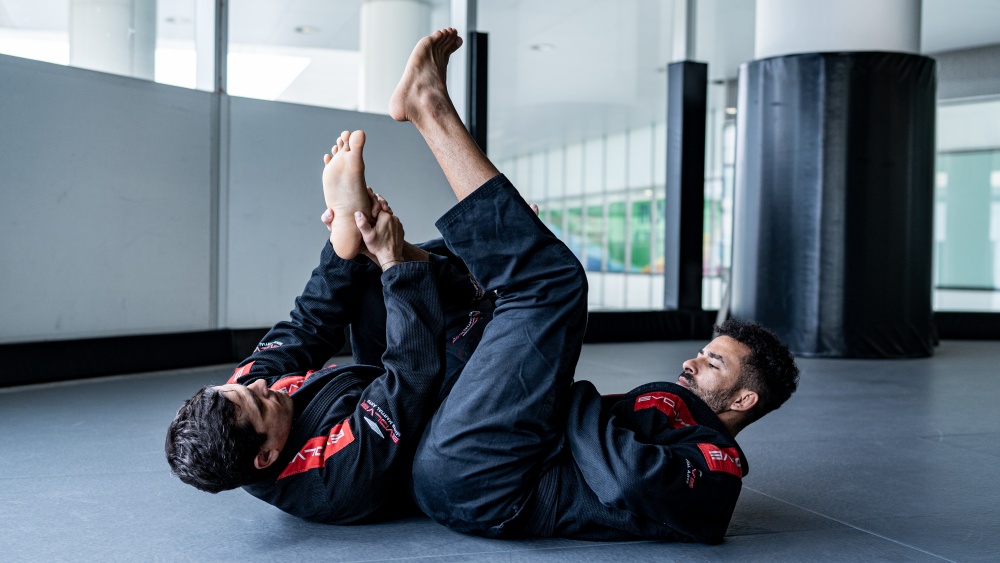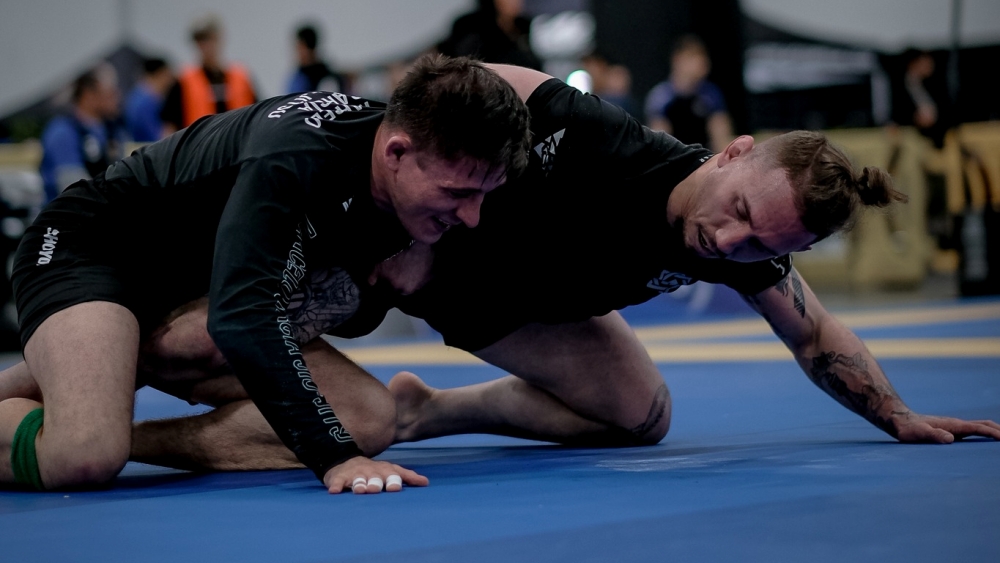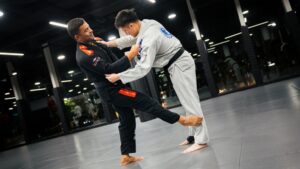Some of the most well-known submissions in BJJ are classified as chokeholds and joint locks. Techniques like the armbar, triangle, and rear-naked choke are among the most common submissions that come to mind when the idea of BJJ is on the table. While chokeholds and joint locks are the most widely used techniques you’ll see in most matches, there is also one segment of submissions known as compression locks.
Compression locks are powerful submissions that put pressure on the muscle against the bone. This article will talk about one of the most painful submissions in BJJ, a compression lock known as the calf slicer.
What Is The Calf Slicer?
The calf slicer, also known as the calf cutter or calf crush, is a type of compression lock in BJJ that targets one of the biggest muscles in the lower body — the calf. It is a technique that primarily targets the calf muscle as you press it towards the shin bone. It can deal enough damage to tear the calf and injure the knee joint as well. Unlike the other lower body submissions, the calf slicer mainly targets the muscle rather than the joint.
Most people think that compression locks like the calf slicer are not effective. This is absolutely not true. The calf slicer, similar to leg locks, is not taught to beginners because of its devastating nature when done recklessly.
Depending on the application, it can deal mild muscle strain to literally tearing the muscle. This is why many BJJ competitions ban this technique at the lower ranks. This technique requires excellent control as it can potentially damage the leg. As mentioned above, the calf slicer is one of the most painful submissions when done correctly.
How To Perform The Calf Slicer
One reason why the calf slicer is seldomly taught in many BJJ academies is that only brown and black belts may use the technique in competitions, limiting its exposure. Nonetheless, you can use this knowledge to your advantage as it is a technique not all people know how to defend against. This submission works by forcing the opponent’s heel to their glutes as you wedge your shin between their calf and hamstring, driving pressure to the opponent’s calf.
The calf slicer can be applied from different positions, such as the half guard, turtle, and side control. Chad Hernandez demonstrates the calf slicer done from the turtle position.
To start, secure one hook inside the opponent’s leg that goes all the way to their calf. Ensure that your shin is placed between the calf and hamstring. Face the opponent’s heel as you grab their toes with a two-on-one grip while your opposite foot pushes your hooked leg’s foot. Sit back and pull the opponent’s toes. You can follow them if they decide to roll.
Calf Slicer From Knee On Belly
Another way to execute the calf slicer, as shown by Tom Davey, is when you are in the top knee ride (knee on belly) position. This variation of the calf slicer uses the forearms as a wedge instead of the shin.
Assuming you have secured the knee ride position, continue by pinning your opponent’s shoulders down as you lean forward. Use your far hand to reach below the opponent’s knee all the way through. Fall your body over, abandoning the knee ride position, and sit on the opponent’s foot, putting it below your glutes. While maintaining control of the opponent’s knee, triangle your legs and reach your thigh with your far hand. Secure the calf slicer by leaning back and pulling your elbow. Tighten the leg triangle to add more pressure.
Lockdown To Calf Slicer
The calf slicer is an effective tool for grapplers familiar with playing the half guard. In BJJ, the lockdown half guard is when the bottom player uses their outside leg to step in and over the opponent’s lower leg. In this video, Tom DeBlass shows the calf slicer from the lockdown.
To start, pull the opponent up above your head by bringing your knees up while grabbing into their armpit to prevent them from coming back down. The next step is to bring your hand through the side as you sit up. Remove the lockdown, do a figure four with your legs instead, and reach for the opponent’s shin to finish the calf slicer.
Keep in mind the importance of pushing with your feet and pulling with your knees during the lockdown. It makes it easier for you to sit out and reach for the leg. A critical detail in finishing the calf slicer is to turn your shin into the opponent’s calf and pull over the blade of your shin.
Reverse De La Riva To Calf Slicer
We seldom see grapplers apply the calf slicer in gi BJJ. This does not mean that it is not useful. The calf slicer is a nice option when using many types of open guards. As shown in the video, start by lassoing your outside foot in and place it on the opponent’s hip. Extend both legs to effectively push the opponent up while you underhook their leg and invert under. Block the opponent’s far leg from behind with your free hand and get your de la Riva hooking leg out, and chop it behind their knee from the outside to apply the calf slicer. Finish by sitting up and reaching the opponent’s hips as you pull them to you.
Final Thoughts

As with most submissions in BJJ, it is always advisable to first establish a dominant position. The examples above all start from either pins or guard variants. The calf slicer is a versatile submission that you can use from various positions. Keep in mind to drill this technique in a controlled manner. Doing so helps prevent the risk of unintended injuries. We highly encourage you to try the calf slicer. It will surely add a layer of unpredictability to your overall game.
You may also like:
















